
The Internet of Things (IoT) is playing an increasing role in e-healthcare. Cohezio, the service for prevention and protection at work, monitors its 120 storage refrigerators. And thanks to geolocation, Charleroi University Hospital (CHU) always knows where the scanners and defibrillators are located. Did you know that IoT is also crucial in the vaccination campaign?
healthcare
More efficient
thanks to IoT
E-health
Eric Fromont,
ICT director at Cohezio
“Thanks to the LoRA network, we get customized data in real time.”

Michel Andris,
IT project manager at CHU Charleroi
"Every mobile scanner or infusion pump can now be traced immediately"

Proximus provides connectivity, IT infrastructure and IoT solutions In the 40 Walloon vaccination centers.

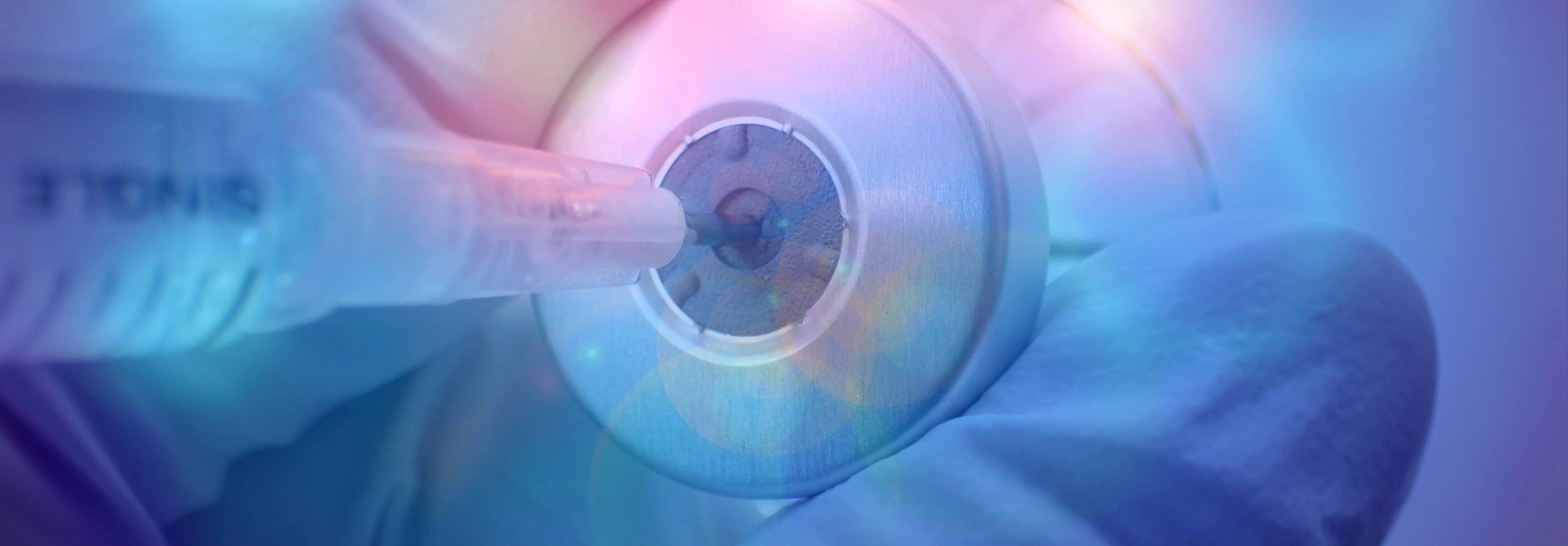

It is not possible to improvise the prevention and protection of 550,000 workers. Cohezio, an external service for prevention and protection at work, is using IoT to optimize its services. Meet Eric Fromont, IT director.
120 Connected refrigerators
Cohezio
The digitalization of the healthcare sector is undeniable. Prevention within companies is carried out by external services using an upstream approach. These services are governed by strict legislation and have to juggle with patient data and e-health web portals. “We process the employee data of about 20,000 customers in Belgium. We designed our own data warehouse, which was recently expanded to include data collected through our IoT projects," explains Eric Fromont.
Connected refrigerators
With national coverage and around 150 logistics centers, the need for automation is apparent to Eric Fromont. One of his projects linked to the Internet of Things concerns the storage of vaccines. "We manage 120 storage refrigerators. Because they are connected with each other, we can not only remote control the temperatures, but we can also detect which equipment needs to be replaced. We have a very useful dashboard which we did not have before.”
The temperature in the refrigerators must be kept between two and eight degrees at all times. Should the temperature exceed those limitations, the system sends an alert to a manager within the medical team. "As part of our ISO 9001 certification, checking whether temperatures are in order is part of the inspectors' checklists. This dynamic and proactive management allows us to focus on other priorities.”
Dynamic management
E-health, data warehouse and IoT
“Not enough organizations seem to be aware of the business applications of IoT.”

Cohezio
Cohezio is the external service for prevention and protection at work. The service monitors the health, safety and welfare of employees and supports employers in fulfilling their legal obligations.
put your 5G plans into practice

As part of its occupational health activity, Cohezio also monitors the environmental parameters of its premises to ensure optimal prevention. "We need to collect data such as temperature, humidity, light and CO2 levels. The Proximus LoRa network gives us tailor-made data in real time. If we have to, we can adjust the conditions immediately. These 'mini-sensors' are entirely complementary to the various professional devices we already use. They allow us to optimize the use of our devices by targeting the moments when we need more complete and precise information," emphasizes Eric Fromont.
Real-time analysis
Step-by-step
Before they started with the Internet of Things, Eric Fromont and his team conducted a thorough analysis of the technologies available on the market. Their eye fell on Proximus. "The competence of the people we spoke to and their responsiveness to our many questions were decisive. We then made a selection of the useful sensors and we studied the ideal locations to place them in service to the network. We tested the connectivity, center by center.” Today, Cohezio manages the collected data via its own BI and reporting platform.
A technology to discover
Cohezio's IT manager considers the fusion of IoT and the healthcare sector as a spectacular step forward. “We have taken the quality of our data to a new level. Not enough organizations seem to be aware of the business applications of IoT. In fact, our projects are often a source of inspiration for our customers who experience the benefits first hand.” Eric Fromont is also looking forward to the deployment of 5G. “The potential of these technologies is huge for the e-health and workplace wellness sectors.”
Eric Fromont
As a trained engineer and Level 1 prevention consultant, Eric Fromont knows the occupational health and safety sector like the back of his hand. He is a strong advocate of technology for health and has been IT director since 2007.

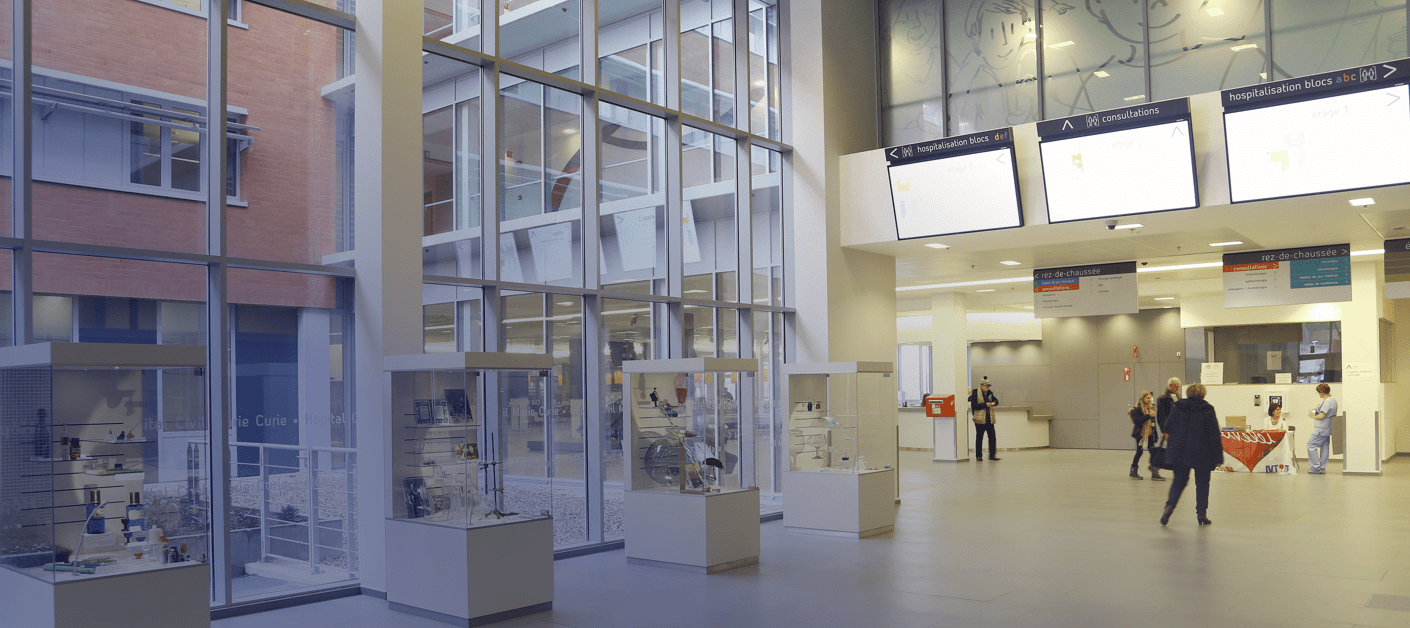

From temperature control during blood transport to parking management, Charleroi University Hospital (CHU) understands the benefits of IoT. Interview with Michel Andris, project manager at the ICT department of Charleroi University Hospital.
Defibrillators on site faster
Charleroi University Hospital
Michel Andris recalls the first project that led to the integration of IoT at CHU. "We started with a fairly simple request: monitoring the temperature of our refrigerators, freezers and laboratory ovens as part of drug monitoring. The reading manual was not very accurate and we needed to gain in reliability, consistency and reporting. We were able to do this thanks to connected objects. We even managed to identify non-compliant equipment.”
Optimizing security
Then, different innovation projects quickly followed at the CHU. "We set up an alert system via a connected button. In the event of a security problem, our staff presses the button and the alert is immediately transmitted, the objective being to be able to intervene as quickly as possible (every second counts). The same technology is also used for patients in sterile rooms, for example," the project manager explains.
Among the many solutions provided by IoT, Michel Andris and his colleagues are also responding to the challenge of geolocation of equipment loaned between departments. "No more endless searches, the position of each mobile scanner or infusion pump is directly identifiable. Just like our defibrillators, which are unfortunately coveted by less well-intentioned people.”
Geolocation
Gaining reliability
“We consider every new idea. If it can be integrated, we look for the most suitable IoT sensor.”
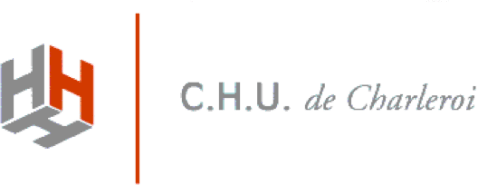
CHU Charleroi
The Centre Hospitalier Universitaire de Charleroi is a public hospital managed by ISPPC. The hospital has 1,424 beds, approx. 4,000 employees and more than 500 doctors.
PUT YOUR 5G PLANS INTO PRACTICE

To ensure smooth and targeted dissemination of information generated by connected objects, CHU has developed its own alarm server. "Many hospitals operate on the basis of heterogeneous systems. Our strategy is to standardize information. Connected objects are therefore one of the entry points for this server. Optimization is as beneficial internally as it is for patients," Michel Andris emphasizes.
Own alarm server
Trying is adopting
Michel Andris has various projects on his plate: parking space management sensors, interactive patient guidance terminals and fall sensors. "We consider every new idea and discuss it with the relevant department. If it can be integrated, we look for the most suitable IoT sensor. In the future, 5G will help us absorb larger volumes and heavier data (such as video) with a lower response time. But for now, my priority is to know how to receive and send information, whether through Wi-Fi coverage or through LoRa.”
Michel Andris
Michel Andris, project manager at the ICT department, manages the IT of four hospitals, thirteen polyclinics & medical centers, six daycare centers and three nursing homes.
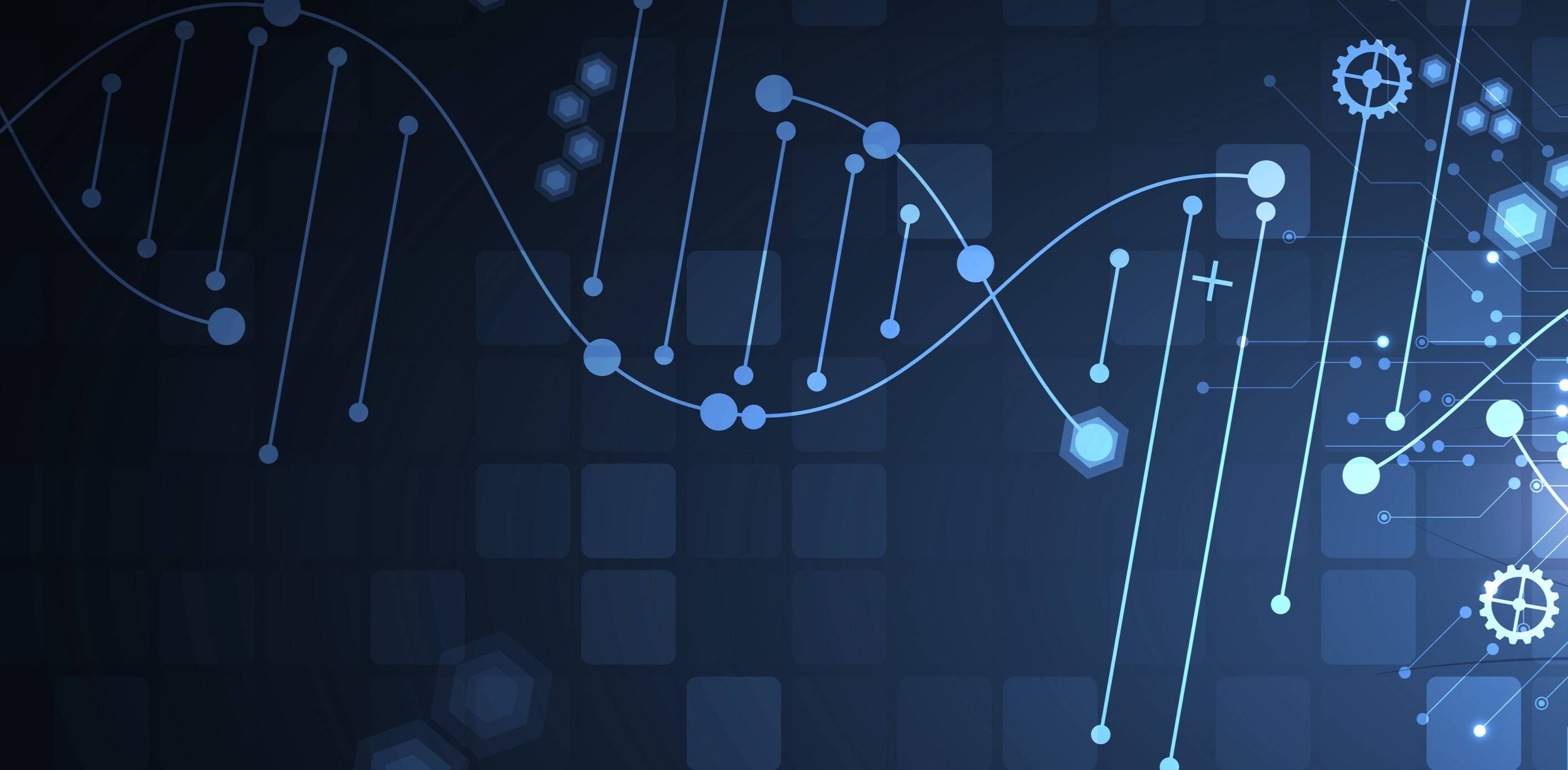
To launch the vaccination campaign against Covid19, it was vital to equip the vaccination centers with telecommunication and IT infrastructure. At the request of l'AViQ, Proximus rolled out 40 new centers over 7 days with:
Proximus and partners connect 40 vaccination centers in 7 days
- internet via a fixed line with 4G backup via to guarantee accessibility.
- a firewall supported by Meraki LAN and a wireless LAN to secure connections.
- Call Connect via mobile devices to enable communication between stewards, administrative staff and medical staff.
- laptops and associated auxiliary equipment such as QR code scanners and printers, configured and installed. They serve to manage the appointments and request documentation.
- IoT sensors connected to the LORA network to monitor the temperature of the vaccines. When the temperature goes outside the foreseen range, the IoT platform sends an alarm via e-mail and SMS to the pharmacist in charge.
- sensors that monitor the CO2 concentration in the vaccination center and count the number of visitors in the center.

IoT sensors monitor the temperature of vaccines

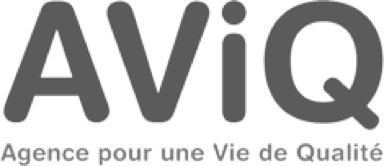
L’AViQ
l' Agence pour une Vie de Qualité is committed to the health and well-being of citizens in Wallonia. L'AViQ places four essential values at the heart of its actions: justice, solidarity, quality and efficiency.
- The sensors are ready-to-use and watertight.
They monitor temperatures down to -55 °C or -90 °C.
They work with an accuracy of up to 0.5 °C.
They can be installed without major modifications.
They automatically send an alarm signal if the temperature deviates from the set values.
They are connected to the MyThings management platform via the Long Range (LoRa) network. Backup of the network is done via local gateways.
They adapt to the desired temperature of the different vaccines
Proximus’ IoT-sensors
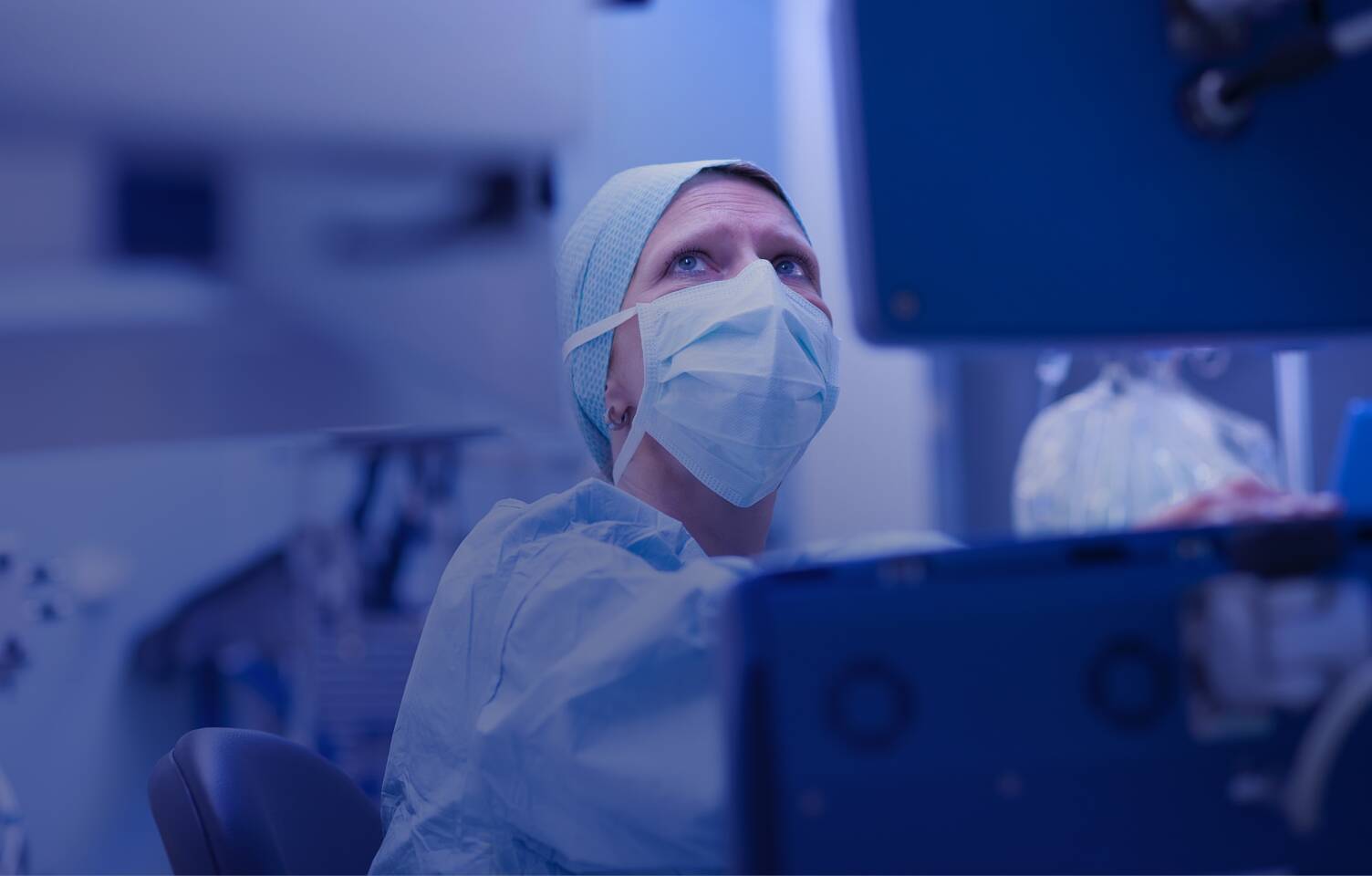
Proximus provides connectivity, IT infrastructure and IoT solutions In the 40 Walloon vaccination centers.

Michel Andris,
IT project manager at CHU Charleroi
"Every mobile scanner or infusion pump can now be traced immediately"

Eric Fromont,
ICT director at Cohezio
“Thanks to the LoRA network, we get customized data in real time.”

E-health
thanks to IoT
More efficient
healthcare
Duurzaamheid
gaat verder dan klimaatambities
It is not possible to improvise the prevention and protection of 550,000 workers. Cohezio, an external service for prevention and protection at work, is using IoT to optimize its services. Meet Eric Fromont, IT director.

Cohezio
120 Connected refrigerators
As part of its occupational health activity, Cohezio also monitors the environmental parameters of its premises to ensure optimal prevention. "We need to collect data such as temperature, humidity, light and CO2 levels. The Proximus LoRa network gives us tailor-made data in real time. If we have to, we can adjust the conditions immediately. These 'mini-sensors' are entirely complementary to the various professional devices we already use. They allow us to optimize the use of our devices by targeting the moments when we need more complete and precise information," emphasizes Eric Fromont.
Real-time analysis

Cohezio
Cohezio is the external service for prevention and protection at work. The service monitors the health, safety and welfare of employees and supports employers in fulfilling their legal obligations.

put your 5G plans into practice
Step-by-step
Before they started with the Internet of Things, Eric Fromont and his team conducted a thorough analysis of the technologies available on the market. Their eye fell on Proximus. "The competence of the people we spoke to and their responsiveness to our many questions were decisive. We then made a selection of the useful sensors and we studied the ideal locations to place them in service to the network. We tested the connectivity, center by center.” Today, Cohezio manages the collected data via its own BI and reporting platform.
“Not enough organizations seem to be aware of the business applications of IoT.”
A technology to discover
Cohezio's IT manager considers the fusion of IoT and the healthcare sector as a spectacular step forward. “We have taken the quality of our data to a new level. Not enough organizations seem to be aware of the business applications of IoT. In fact, our projects are often a source of inspiration for our customers who experience the benefits first hand.” Eric Fromont is also looking forward to the deployment of 5G. “The potential of these technologies is huge for the e-health and workplace wellness sectors.”
Eric Fromont
As a trained engineer and Level 1 prevention consultant, Eric Fromont knows the occupational health and safety sector like the back of his hand. He is a strong advocate of technology for health and has been IT director since 2007.

E-health, data warehouse and IoT
The digitalization of the healthcare sector is undeniable. Prevention within companies is carried out by external services using an upstream approach. These services are governed by strict legislation and have to juggle with patient data and e-health web portals. “We process the employee data of about 20,000 customers in Belgium. We designed our own data warehouse, which was recently expanded to include data collected through our IoT projects," explains Eric Fromont.
Connected refrigerators
With national coverage and around 150 logistics centers, the need for automation is apparent to Eric Fromont. One of his projects linked to the Internet of Things concerns the storage of vaccines. "We manage 120 storage refrigerators. Because they are connected with each other, we can not only remote control the temperatures, but we can also detect which equipment needs to be replaced. We have a very useful dashboard which we did not have before.”
The temperature in the refrigerators must be kept between two and eight degrees at all times. Should the temperature exceed those limitations, the system sends an alert to a manager within the medical team. "As part of our ISO 9001 certification, checking whether temperatures are in order is part of the inspectors' checklists. This dynamic and proactive management allows us to focus on other priorities.”
Dynamic management

Duurzaamheid
gaat verder dan klimaatambities

Charleroi University Hospital
Defibrillators on site faster
From temperature control during blood transport to parking management, Charleroi University Hospital (CHU) understands the benefits of IoT. Interview with Michel Andris, project manager at the ICT department of Charleroi University Hospital.
Michel Andris
Michel Andris, project manager at the ICT department, manages the IT of four hospitals, thirteen polyclinics & medical centers, six daycare centers and three nursing homes.

CHU Charleroi
The Centre Hospitalier Universitaire de Charleroi is a public hospital managed by ISPPC. The hospital has 1,424 beds, approx. 4,000 employees and more than 500 doctors.
PUT YOUR 5G PLANS INTO PRACTICE
Geolocation
Among the many solutions provided by IoT, Michel Andris and his colleagues are also responding to the challenge of geolocation of equipment loaned between departments. "No more endless searches, the position of each mobile scanner or infusion pump is directly identifiable. Just like our defibrillators, which are unfortunately coveted by less well-intentioned people.”
Optimizing security
Then, different innovation projects quickly followed at the CHU. "We set up an alert system via a connected button. In the event of a security problem, our staff presses the button and the alert is immediately transmitted, the objective being to be able to intervene as quickly as possible (every second counts). The same technology is also used for patients in sterile rooms, for example," the project manager explains.
Own alarm server
To ensure smooth and targeted dissemination of information generated by connected objects, CHU has developed its own alarm server. "Many hospitals operate on the basis of heterogeneous systems. Our strategy is to standardize information. Connected objects are therefore one of the entry points for this server. Optimization is as beneficial internally as it is for patients," Michel Andris emphasizes.
Trying is adopting
Michel Andris has various projects on his plate: parking space management sensors, interactive patient guidance terminals and fall sensors. "We consider every new idea and discuss it with the relevant department. If it can be integrated, we look for the most suitable IoT sensor. In the future, 5G will help us absorb larger volumes and heavier data (such as video) with a lower response time. But for now, my priority is to know how to receive and send information, whether through Wi-Fi coverage or through LoRa.”
Gaining reliability
Michel Andris recalls the first project that led to the integration of IoT at CHU. "We started with a fairly simple request: monitoring the temperature of our refrigerators, freezers and laboratory ovens as part of drug monitoring. The reading manual was not very accurate and we needed to gain in reliability, consistency and reporting. We were able to do this thanks to connected objects. We even managed to identify non-compliant equipment.”
“We consider every new idea. If it can be integrated, we look for the most suitable IoT sensor.”


Proximus and partners connect 40 vaccination centers in 7 days
To launch the vaccination campaign against Covid19, it was vital to equip the vaccination centers with telecommunication and IT infrastructure. At the request of l'AViQ, Proximus rolled out 40 new centers over 7 days with:
- internet via a fixed line with 4G backup via to guarantee accessibility.
- a firewall supported by Meraki LAN and a wireless LAN to secure connections.
- Call Connect via mobile devices to enable communication between stewards, administrative staff and medical staff.
- laptops and associated auxiliary equipment such as QR code scanners and printers, configured and installed. They serve to manage the appointments and request documentation.
- IoT sensors connected to the LORA network to monitor the temperature of the vaccines. When the temperature goes outside the foreseen range, the IoT platform sends an alarm via e-mail and SMS to the pharmacist in charge.
- sensors that monitor the CO2 concentration in the vaccination center and count the number of visitors in the center.
- The sensors are ready-to-use and watertight.
They monitor temperatures down to -55 °C or -90 °C.
They work with an accuracy of up to 0.5 °C.
They can be installed without major modifications.
They automatically send an alarm signal if the temperature deviates from the set values.
They are connected to the MyThings management platform via the Long Range (LoRa) network. Backup of the network is done via local gateways.
They adapt to the desired temperature of the different vaccines
Proximus’ IoT-sensors
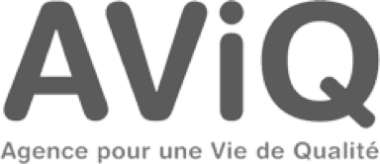
L’AViQ
l' Agence pour une Vie de Qualité is committed to the health and well-being of citizens in Wallonia. L'AViQ places four essential values at the heart of its actions: justice, solidarity, quality and efficiency.
IoT sensors monitor the temperature of vaccines